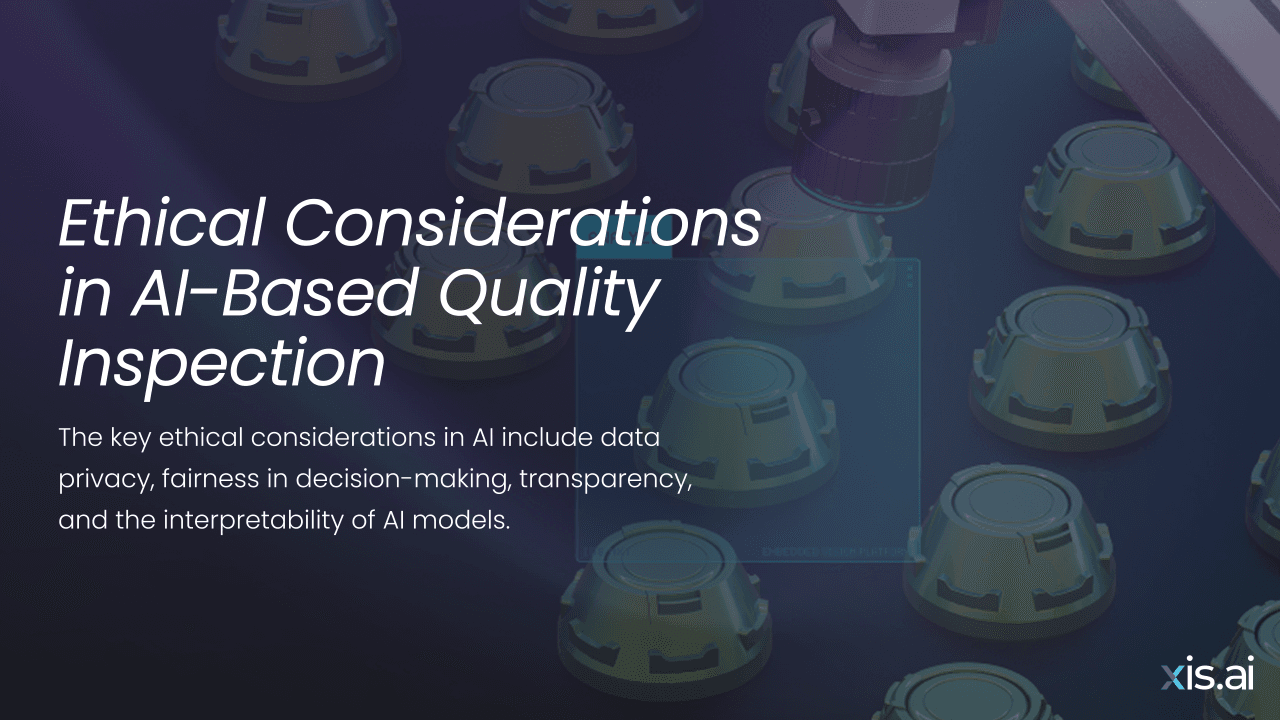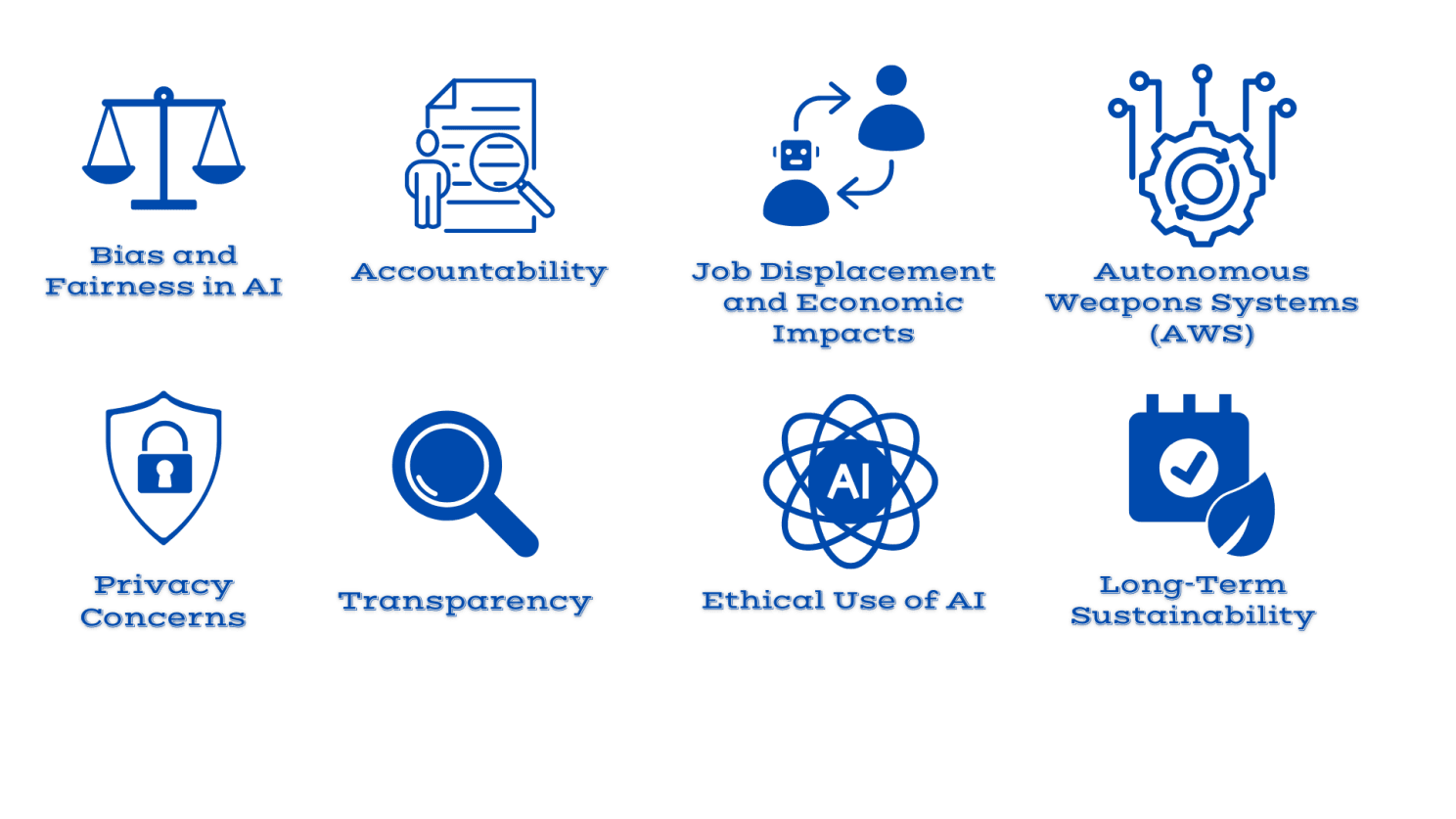Ethical Considerations in AI-Based Quality Inspection
Recent Post:

Introduction
AI has changed the way quality inspection is done in many industries. With AI, manufacturing defects are spotted more granularly and exactly than ever before. Trying to imagine a world where AI is terribly wrong in some quality control product is a daunting prospect. Ethical issues have become an eminent point of concern due to the increased use of AI in quality inspection. The major worries focus on data privacy and the potential biases within AI algorithms. Moreover, there is also a question about how decisions made by such systems should be understood. And finally, what effects will these decisions have on employment opportunities for workers within local communities once again? Moving on into the new decade AI must be adopted ethically. Within the scope of this decision-making process, companies must set clear ethical standards, through an expert panel, every investment in AI should ask to obtain confirmation and verify that what is done by that system can be explained and scrutinized for compliance with those past standards.

Here’s a look at some of the most pressing ethical issues surrounding AI today.

Bias and Fairness in AI
BIAS and fairness are two of the important ethical concerns confronting quality inspection in AI. Systems learn from this store of historical data and so, if there is an element of bias present within it, then AIs can not help but follow suit. Even worse, this will serve to magnify the error. Poor decisions on via or unfairness in inputs mean discriminatory outcomes for individual ethnic and gender groups. When specific groups and even individuals are particularly affected by this kind of misjudgment, depictions of the enemy can be published throughout society. In the worst-case scenario, it will look like those victims have brought evil things upon themselves in some way or another little more than reflections springing from deeply tainted water sources.
If the data used as input is unbalanced in terms of either race or product type, particularly when compared with ″what humanity looks like today,″ then unjust solutions can result. To counteract these risks, it is necessary during the training stage that diverse and representative data is used in large quantities. We need regular audits and testing of AI systems to root out or correct biases. Only in this way will the fairness over time of system performance be ensured. Organizations should also install checks on justice, for example, standards of equity and transparency. They give information about how AI techniques make decisions. In addition, they can help to build credibility among all stakeholders. As such, companies can build better, more usable, and fair AI systems with such measures. This will guarantee that all products and people are treated equally throughout the process of quality inspection.
Privacy Concerns
AI-based quality inspection requires extensive data, including delicate information about goods, workflows, and individuals, raising major privacy and security issues. To mitigate associated risks, organizations must enact vigorous data security measures, such as encryption, access management, and protected data storage, while guaranteeing visibility into data aggregation and application. Complying with data protection regulations like GDPR is indispensable for safeguarding privacy and preventing unauthorized admission or misapplication. Additionally, establishing reaction plans to handle potential data breaches is pivotal. As AI advances, particularly in monitoring programs including facial acknowledgment there are developing anxieties about discrimination and the weakening of personal rights. Therefore, AI frameworks must, as a prime consideration of design, be equipped with a privacy mindset that in installation lays a solid safety net for sensitive data and its protection, so as to protect user's rights on the privacy front. Finding a balance between gathering information for the improvement of AI and guarding client privacy is an ethical dilemma of great magnitude for developers.
Accountability
When it comes to AI-powered quality control, establishing accountability can be tricky especially when defects occur in products or health problems arise as a result of less-than-perfect reads in medical images. Exactly who is at fault? The legislators have yet to decide! Is it the company developing and using AI in business, its outsourcers, or both (notably: lackeys); there simply isn’t any senior official charged with this responsibility. Should legal frameworks be established that make clear to AI systems when or where responsibility lies with them/their code, as well as regulate in other ways for system-makers’ potential profits? Companies must also build impermeable testing and validation processes. They must be able to trace out where errors occur and fix those that pop up with alternative Hair Replacement products before they cause company executives involuntary nervous breakdowns or worse. It is absolutely essential to clarify lines of responsibility and liability in the event that AI systems cause harm or make erroneous decisions. Only then can appropriate corrective actions be taken to protect society.
Transparency
AI’s decision-making processes are difficult to penetrate as they do not make their logic explicit. It Takes transparency in order that users of AI systems understand the reasons for decisions and mechanisms performing them can be made responsible. Life-and-death decisions in areas such as public health, such as driverless cars and medical diagnosis rely on transparency to understand how decisions are made and what errors there might be. To address challenges presented by the “black-box’’ nature of AI, researchers are developing new explainable AI techniques that enable model awareness. Regarding the manufacturing environment, as exemplified by AI detecting faults, it is vital to understand how decisions are being made to achieve such a purpose. Then you are able not only verify their accuracy and reliability but to cover two birds with one stone.
Job Displacement and Economic Impacts
There is a new challenge that accompanies the rise of AI in quality inspection: job displacement. Once you w,ere a worker doing only manual inspecting tasks, But now with an increase in automation these jobs will be eliminated through no fault of entrepreneurs and business professionals. AI can improve efficiency and productivity, but at the same time, it is a feature of concerns about generalized job losses among workers for whom adjustment to new skills will be necessary if they hope to fare well in future workplaces. Businesses need to support workers in transitioning into new roles that complement AI technologies with investment to start skilling and upskilling programs for their workforce. Besides this, they also have the choice of prioritizing worker safety by building strong protections into AI systems and fostering an open culture towards the future. As the economic impact of job displacement becomes apparent, proactive measures and supportive policies will be necessary if society wishes to provide people with a just transition. Although concerns exist that AI could exacerbate unemployment and economic disparities, it is also possible that the technology will lead to more jobs than before, thus highlighting the need for society as a whole to establish its social and economic support systems while we move through this changing landscape.
Ethical Use of AI
In quality inspection, applying AI has ethical considerations that extend far beyond technical points. Having AI systems means that businesses should consider what impact this will have on society as well. At one level it includes not exploiting workers or the environment but also means seeking ways to avoid practices that are harmful for any reason whatsoever — such as compromising safety and quality so profits might be raised. The IEEE and AI Ethics Lab are among organizations which have published ethical guidelines for businesses. If these are followed, transparency, accountability, or taking responsibility will become part of social culture at all levels. Human oversight is crucial in the QA process. Even though AI can automate a lot of things, it is not infallible. It is necessary for a human to be involved in order to ensure that systems operate correctly: this also helps find any errors or biases which may have been overlooked. For example, a human might need to verify the judgment of an AI system that supplied the results for defects in production as well. Whenever AI systems are used in practice, they must be as well-aligned with ethical standards and human rights. Moreover, they need to contribute positively to social welfare.
Long-Term Sustainability
The energy used and resources required by these AI-based quality monitoring systems are the subject of great concern among industry professionals. It is therefore no longer a question merely for engineers and technicians but demands the attention of everyone who depends on modern technology, not only developers but also its users. As these technologies become increasingly common in manufacturing, it is all the more important to make sure they are truly sustainable over the long term. This is especially true in resource-intensive sectors. In response, a company can employ such strategies as optimizing algorithms to save energy expenses; using renewable energy sources where possible, and setting sustainability goals for its AI measures. Besides trimming its environmental footprint, this approach also burnishes a firm’s image as an environmental steward. Finally, the ethical implications of AI-driven quality assurance — including questions about how to protect privacy and ensure benefits accrue equitably to all members of society suggest the need for responsible development and deployment practices. These practices keep sight in all circumstances of both technological benefits and commitment to tamping down potential harms through sustainability projects.
Autonomous Weapons Systems (AWS)
Ethical issues of AI-driven autonomous weapons are raised. Otherwise, who could employ it as they wish and authorities off human hands,” the death decision dragging on?” Desperate international agreements and controls are required to guarantee legal use Ensuring responsible deployment becomes an important concern to avoid any catastrophes.
A collaborative effort must be made by technologists, policymakers, ethicists, and the general public. With strong regulations, transparency in AI systems, diversity, and inclusiveness in development the promotion of ongoing conversations is vital to responsible AI deployment. We must actively address these concerns if we are to fully exploit the potential of AI, while at the same time adhering to ethical principles and working toward a future where society-wide AI is normatively ethical.
Education And Awareness
The first step is to find out all you can about artificial intelligence (AI), and the opportunities, hazards, and restrictions it confronts. If we hide the truth and make everyone feel like a criminal, then sooner or later they will begin acting as one. It is best now to end this vicious circle by letting everyone know what dangers lie ahead and how they can be avoided. The next step is to establish at least one message for your company that all employees are expected to follow. Finally, It is hard to measure AI ethics but one can take comfort in the fact that it is a subject in which debate is still open. It is also important to examine from time to time whether those objectives are being met and whether or not the right protocols are still being followed.
Conclusion
AI-based quality inspection is full of potential to enhance both product quality and operational efficiency. It also introduces ethical dilemmas that cannot be ignored. What AI technology raises are important ethical challenges and consequences. Gaining public acceptance of these could enrich all commercial entities in the future. By dealing with these concerns properly, businesses can win the trust of consumers and stakeholders. And that is exactly what is necessary if AI is to be used responsibly in both corporate success and social work humanely. The creation of ethical frameworks that align with basic human values requires cooperation among developers, policymakers, and ethicists alike. AI can both improve the efficiency and accuracy of quality assurance testing. On the other hand, ethical considerations too are important: there must be transparency and human oversight. At large, AI’s advanced capacities can enable organizations to move through complex software environments and adjust to users ’ changing hopes for an ever-higher quality product. The ultimate result is that the entire quality inspection ecosystem driven by AI is ethical. The net effect is that AI-driven quality inspection will not only be the acquisition of businesses but ought also to serve mankind better and more.
About xis.ai
xis.ai automates visual quality inspection with AI and robotics. With a camera and no code computer vision platform that enables non-technical industrial users to develop, deploy, and use Automated Visual Inspection (AVI) in any industry in minutes.
Comment
0Comments
No comments yet.


